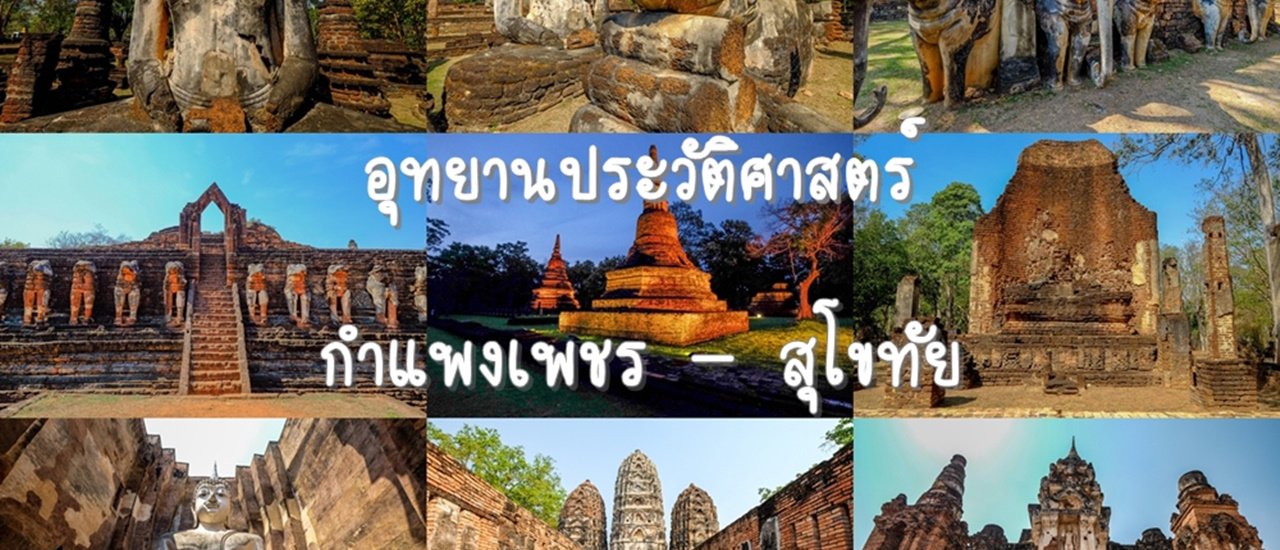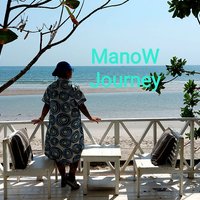Visiting Two Historic Cities: Kamphaeng Phet and Sukhothai
This sentence describes a trip to two historical cities in Thailand: Kamphaeng Phet and Sukhothai. Both cities were once important centers of the Sukhothai Kingdom, which flourished in the 13th and 14th centuries. Today, they are popular tourist destinations known for their impressive ruins and rich history.

Greetings, my dear travelers! Join me, your mischievous guide, on a journey through the historical cities of Kamphaeng Phet and Sukhothai, nestled in the northern region of Thailand. These ancient cities, boasting centuries of rich history and cultural heritage, await your exploration.
While Sukhothai is renowned for its tourist attractions, Kamphaeng Phet remains relatively unknown. Often seen as a mere stopover on the way to northern Thailand, Kamphaeng Phet offers much more than just a passing glance.
Yes, that's right. The villain will take you on a tour of Kamphaeng Phet Province as the first stop. The villain guarantees that everyone will be amazed by the trip. The villain will only spend 2 days and 1 night on the Kamphaeng Phet tour. Don't believe the villain yet. You have to follow the villain on a trip first.
Kampaeng Phet Province: A Legacy of History and Culture
Motto:
- Land of Amulets: Renowned for its rich collection of ancient amulets.
- City of Strong People: Home to a resilient and determined population.
- Magnificent Laterite: Featuring impressive structures built from laterite stone.
- Sweet Kluai Khai Bananas: Known for its delicious and unique Kluai Khai bananas.
- Lanta Buffalo Oil: Celebrated for its high-quality Lanta buffalo oil.
- World Heritage Site: Boasts a UNESCO World Heritage Site, the Kamphaeng Phet Historical Park.


The journey begins in Bangkok, heading towards Kamphaeng Phet province. The mischievous character uses public transportation, commonly known as tour buses, or if anyone wants to drive their own car, they can drive there. The distance from Bangkok to Kamphaeng Phet is approximately 362 kilometers. However, the mischievous character chooses to take the Transport Co.'s tour bus (999) to Kamphaeng Phet Bus Terminal. It is a Po.2 bus. The mischievous character booked a round-trip ticket through the website and received a special discount. Payment was made at 7-ELEVEN, and the receipt was used to issue a ticket at the ticket counter 30 minutes before the bus departure.
There are only two round-trip tour buses per day from Bangkok to Kamphaeng Phet. There are also several other tour buses that pass through Kamphaeng Phet. You can check the website www.pns-allthai.com for more information.

**Kamphaeng Phet** is a historic city that has flourished since the Dvaravati period. Historically, Kamphaeng Phet served as an outpost city of Sukhothai and held the status of a secondary capital. It was originally known as "**Mueang Chakangrao**".
The Kamphaeng Phet Historical Park is believed to have been the site of two cities: "Mueang Chakangrao" and "Mueang Nakhon Chum." Mueang Nakhon Chum was built first, located on the west bank of the Ping River. Mueang Chakangrao was built later on the east bank of the Ping River.
The villain will take you on a trip to the other side of the city of Kamphaeng Phet, which is a trip to the city of Kamphaeng Phet itself. There are many tourist attractions in the city of Kamphaeng Phet. The villain has a tourist map of Kamphaeng Phet Province to share with you, in case anyone can't think of a tourist attraction.

Our first stop in Kamphaeng Phet should be a place of worship.
City Pillar Shrine of Kamphaeng Phet Province
Located within the grounds of Wat Phra Kaew, Kamphaeng Phet Historical Park

Local residents often visit the shrine to pray for blessings related to housing, lost items, and overall life stability. This is because the Kamphaeng Phet City Pillar Shrine is believed to represent steadfastness and unwavering resolve, strengthening the minds of those who seek its blessings.
As a sign of respect, local drivers honk their horns when passing by the City Pillar Shrine.

The City Pillar Shrine was renovated and celebrated on May 5, 1984. It is a square building with a perimeter of 17.5 x 17.5 meters, facing all four directions, in accordance with astrological principles. It is a reinforced concrete building with a marble floor and sand-washed laterite-colored walls. The new city pillar is made of golden teak wood and is 2.29 meters high from the base of the pillar. The base is 64 centimeters wide.



Inside the main city pillar shrine, incense burning is prohibited. People can pay their respects at the designated spot within the shrine or at the front entrance. Visitors come to the shrine for various reasons, including making vows and offering thanks for answered prayers.

After paying respects at the city pillar shrine, a sacred landmark of Kamphaeng Phet, we will proceed to the Kamphaeng Phet Historical Park. The park encompasses archaeological sites both within and outside the city walls. Notably, the city pillar shrine is situated adjacent to the archaeological sites within the city walls.
Kamphaeng Phet Historical Park
The ancient monuments of Kamphaeng Phet are almost all religious sites of Theravada Buddhism of the Lankawong lineage. They date back no earlier than the 19th Buddhist century, or the reign of King Maha Thammaracha I. Buddhism at that time had two groups of monks: the Khamvasi, or monks who lived in the city, and the Aranyawasi, or those who lived outside the city.

The Kamphaeng Phet Historical Park was inscribed on the UNESCO World Heritage List on December 12, 1991.
Admission fee: 20 baht for Thai citizens, 100 baht for foreigners.

Within the historical park, QR codes are available for visitors to scan to access information about the archaeological sites located within the park, eliminating the need for a guide to narrate the history.

Scan the QR code using your mobile phone to access the information page. The page will provide details about Kamphaeng Phet Historical Park.

Upon entering the historical park, visitors will encounter QR codes. These codes allow visitors to select their preferred language and listen to audio narrations about the ancient structures within the park. This provides visitors with insights into the history and stories of each location.

There are two important ancient sites within the walls of Kamphaeng Phet Historical Park:
Temple of the Relics
The temple is a large ancient monument located in the eastern part of the city, opposite Wat Phra Kaew. The temple layout is rectangular, with major structures built along an east-west axis. These structures include a laterite base.

Behind the viharn is the main bell-shaped stupa, built of brick. It is surrounded by a covered walkway. The rear end of the viharn, which is located at the front, extends into the covered walkway.

The main stupa is a large, bell-shaped stupa made of brick. Only the base of the stupa is made of laterite. The stupa sits on an octagonal base that is raised in tiers.
The next section is a garland of three inverted lotus tiers, also known as "bัวถลา," which supports the relatively small bell-shaped mouth of the stupa. Above this is a throne, made in the style of a twelve-sided lotus base. Then comes the top of the stupa, which consists of a section called "bัวฝาละ," with a "ปล้องไฉน" and a "ปลียอด."

In the evening, the park will light up the ancient sites, allowing visitors to enjoy the scenery after sunset.


The Temple of the Emerald Buddha
The temple is the largest in Kamphaeng Phet, located in the city center. The temple layout is rectangular, with major structures arranged in a line running east-west, parallel to the southern city wall. Laterite walls mark the boundaries of the temple.
The front of the temple has a large, high base made of laterite. On top of the base is the base of the ordination hall, surrounded by slate boundary stones.

The main Buddha statue is damaged, leaving only the inner core, which is made of sandstone.

Following the base of the ordination hall to the rear, there is a large, square, board-like base structure built in three layers, similar to the base of a pagoda.



The Lion-Guarded Chedi, located west of the Phra Prang, is a large, bell-shaped chedi that stands out from the other chedis, making it the main chedi of Wat Phra Kaew.


The lower base of the stupa is surrounded by 32 niches. Originally, each niche contained a stucco lion, matching the number of niches.



Above this level, there are 16 alcoves for stucco Buddha statues. The Buddha statues are almost completely broken and damaged.

Above is the Malai Thao layer, which is made into a set of three tiers of lotus petals supporting the bell-shaped structure. The mouth of the bell still shows a line of molded stucco lotus petals called "Bua Pak Ra Khang". Next is the Balang, which has the form of a lotus base, but is different from other chedis in that it is made into a pavilion extending in all four directions. From the Balang upwards, it becomes a core of "Pleng Chainai", then a "Pleng Chainai" and finally the top finial.

The three-spired pavilion, located behind or to the west of the bell-shaped chedi surrounded by lions, has a square base similar to that of the pavilion. There are seated Buddha statues in the attitude of subduing Mara, of which only the sandstone heads remain on the base of the building. The square base of the building is followed by a low-lying platform base.


The vihara houses large stucco Buddha statues, including two in the posture of subduing Mara and one in a reclining position.

The sentence is already in English and does not require translation.
The facial features of the three Buddha statues are rather angular. The eyebrows are connected, resembling the shape of a crow's wing. The eyes are narrow and elongated, with pointed ends. This contrasts with the Buddha statues found in Sukhothai art in Kamphaeng Phet.



A sandstone Buddha statue in the Mara-Vijaya posture, of which only the head remains.


The rear section of the temple features a bell-shaped stupa with a square base, located within the ambulatory.

The square base of the pagoda is adorned with 32 half-body stucco elephants protruding around it. What sets this pagoda apart from other elephant-encircled bell-shaped pagodas is the presence of four corner pagodas on the square base. As a result, the original structure of this pagoda would have been a five-spired bell-shaped pagoda surrounded by elephants.



Within the Kamphaeng Phet Historical Park, located within the city walls, there are two significant historical sites: Wat Phra That and Wat Phra Kaew. While these structures have suffered considerable damage and deterioration over time, their remnants still offer a glimpse into their past grandeur. One can only imagine the exquisite artistry and beauty that these sites must have possessed in their prime.
Next, we will visit the historical park of Kamphaeng Phet outside the city walls, which is not far from the city walls.
The Kamphaeng Phet Historical Park
Located outside the walls of Kamphaeng Phet city in the Aranyik district, the Kamphaeng Phet Historical Park encompasses numerous ancient sites, collectively known as "Wat Pa" (Forest Temple). Among these, three hold particular significance: Wat Chang Rob, Wat Phra Si Iriyabot, and Wat Phra Non.

Kamphaeng Phet Historical Park, Aranyik Zone is open daily from 8:00 AM to 5:00 PM. The entrance fee for Thai citizens is 20 baht, and for foreigners, it is 100 baht. For those who wish to bring their vehicles into the park, the entrance fee is 50 baht per vehicle.
The Kamphaeng Phet Historical Park outside the city walls allows visitors to drive their vehicles inside. There are many temples in this area, and the villain will take you to visit only three of them.

Similarly, QR codes are available for scanning to access the history of each temple in five languages. This eliminates the need to hire a guide to explain the temple's history, as visitors can access the information independently.

Wat Chang Rop
Dating back to the 20th-21st centuries CE (1901-2100 CE), Wat Chang Rop is an ancient site perched atop the highest point of this hill. It features a large, bell-shaped main stupa with a square base, each side measuring 31 meters in length. The base is adorned with 68 stucco elephants in ceremonial attire, emerging halfway from the structure. At the corners of the upper base, or the circumambulation platform, there are four small stupas.




The four sides of the base of the staircase are adorned with sculpted lions and guardians.


The upper part of the stupa is spherical, resting on an octagonal base adorned with stucco reliefs depicting scenes from the life of the Buddha. Terracotta figures of angels, Kinnaris, and swans surround the base.

In front of the temple, there is a large sandstone pond that was excavated to build this ancient site.

A small ubosot is located in the northeast corner.


Temple of the Four Postures of Buddha
The 20th–21st centuries of the Buddhist era (1901–2100 CE) saw the construction of significant structures within the Buddhist monastery grounds. These include a vihara with a receding corner base on both the front and back sides, situated on a large supporting base known as a paiti. The front terrace of the paiti base features platforms for sculptures, likely depicting lions and guardian figures. On the chukchi base inside the vihara, a large seated Buddha statue is enshrined.


Behind the main hall is the main stupa, which houses the Four Postures of Buddha. The stupa is a square pavilion with a solid central core made of laterite and brick to support the roof. The pavilion has four projecting porches, one on each side. The walls of the solid core are decorated with various stucco Buddha statues in different postures.

On the western wall, the standing Buddha statue in the attitude of forgiveness (standing) is enshrined. It is currently in a relatively better condition than other parts of the wall.


Beneath the pedestal of the Buddha statue in the posture of subduing Mara (seated)


On the eastern side, there is a statue of the Buddha in the walking posture (Līlā).

The north side features a reclining Buddha statue (sleeping).

Reclining Buddha Temple
The temple dates back to the 20th-21st centuries CE (1901-2100). The layout is rectangular, facing east. The walls are made of laterite. In front of the temple, there is a pavilion, a well, and a bathing room. The temple is divided into two sections: the Buddhavasa (sacred area) and the Sanghavasa (residential area). Both sections are enclosed by laterite walls.
Buddhavasa:
- The main structure is the Ubosot (ordination hall).
- There is a large bell-shaped stupa.
- A pavilion houses Buddha statues.
Sanghavasa:
- Located north of the Buddhavasa, this is where the monks reside.
- It includes僧房 (monks' quarters), a pavilion, a well, and a latrine (vejakuti).
- Schist stelae with carved patterns have been found.

The Ubosot: A Sacred Space for Buddhist Rituals
The Ubosot, a crucial structure in Thai Buddhist temples, serves as the designated space for僧伽 (saṅgha) to perform religious ceremonies. Constructed from laterite bricks and coated with plaster, this building boasts impressive porches on both its front and rear sides. The interior features octagonal pillars, surrounded by eight sema stones that mark the sacred boundary of the Ubosot. These sema stones are traditionally crafted from slate.


The viharn is a rectangular building with porches on both the front and back sides.

Inside the viharn, there are rows of monk seats and a platform for the principal Buddha statue (Chukchi base). The principal Buddha statue itself is completely broken and ruined.


The supporting pillars for the upper structure are square-shaped sandstone pillars. The vihara is a hall-like structure without walls, with a low-pitched gable roof extending outwards.


As the villain mentioned, there are more than just three temples within the Kamphaeng Phet Historical Park, Aranyik Zone (outside the city walls). The area is vast, encompassing numerous temples, some of which are known as "forest temples." Even the villain hasn't been able to visit them all. Exploring these temples allows visitors to delve into history while simultaneously experiencing a UNESCO World Heritage Site, a source of pride for all Thais.
Kamphaeng Phet National Museum
Located at 174 Pin Damri Road, Nai Mueang Subdistrict, Mueang Kamphaeng Phet District, Kamphaeng Phet Province 62000
Located between Kamphaeng Phet Wittayakhom School and Kamphaeng Phet Provincial Museum.
Open Wednesday - Sunday, 9:00 AM - 4:00 PM. Closed Mondays, Tuesdays, and public holidays.
Admission fee: Thai citizens 20 baht, foreigners 100 baht.

The Kamphaeng Phet National Museum offers a tram service that takes visitors on a tour of the city. Another tram service is available near the Bodhi tree, close to the roundabout and the Kamphaeng Phet Provincial Hall. Visitors interested in riding the tram can inquire with the museum staff.

The Kamphaeng Phet National Museum
The Kamphaeng Phet National Museum serves as a repository for historical and archaeological artifacts from the Kamphaeng Phet Province. Its primary functions include:
- Collecting: The museum actively gathers artifacts through archaeological surveys, excavations, and restoration projects conducted within the province.
- Preserving: The museum ensures the long-term preservation of collected artifacts through proper storage and conservation techniques.
- Exhibiting: The museum showcases its collection to the public, providing insights into the rich history and cultural heritage of Kamphaeng Phet.
The exhibition is divided into sections that showcase the historical development of Kamphaeng Phet Province, from the prehistoric era to the Sukhothai period. Notable artifacts include polished stone tools, fragments of Roman-style terracotta lamps, glass and stone beads, metal tools and utensils, terracotta molds from the Lopburi period, Sukhothai-era Sangkhalok ceramics, and Sukhothai-style Buddha images from the Kamphaeng Phet school of art.


Stone and glass beads from the prehistoric period (approximately 2,000-1,500 years ago) were discovered at the Ban Nong Kong archaeological site in Na Bo Kham Subdistrict, Mueang Kamphaeng Phet District, Kamphaeng Phet Province.



Sangkhalok dolls, Sukhothai art (20th-21st centuries CE) were found in Kamphaeng Phet province.

Sukhothai Art Jar with Lid (19th-20th centuries CE)
This jar with lid, an example of Sukhothai art, was discovered during excavations at Wat Sing in Kamphaeng Phet Province.
Note: The original image link is not included in the translation as per your instructions.




The bronze statue of Shiva that was once enshrined at the Shiva shrine.



The final room showcases the story of Kamphaeng Phet in the present day, presenting the lifestyles of the people who live in the area of Kamphaeng Phet province today and the minority groups in Kamphaeng Phet province.
Clothing of the Hmong (Miao) ethnic group

Lisu (Lisu) Ethnic Group Attire
The Lisu (Lisu) ethnic group is known for its distinctive attire, which reflects their cultural identity and traditions.

The next location, the Thai House Museum, is adjacent to the Kamphaeng Phet National Museum.
Kamphaeng Phet Provincial Museum (Thai House Museum)
Located at 104/5 Pin Damri Road, Nai Mueang Subdistrict, Mueang Kamphaeng Phet District, Kamphaeng Phet Province 62000


The Kamphaeng Phet Provincial Museum (Thai House Museum)
This museum was constructed to commemorate the 50th anniversary of the ascension to the throne of His Majesty King Bhumibol Adulyadej (Rama IX). Built entirely of teak wood, the museum's architecture reflects the traditional Thai house style of the central region.
The villain did not enter the upper part of the Thai house, so she was not sure what the interior of the Thai house would be like. The villain only walked around the surrounding area.





The Shrine of Shiva
The Shrine of Shiva is located behind the Juvenile Observation and Protection Center.

The only Hindu temple within the walls of Kamphaeng Phet, Phra Itsawan now stands as a rectangular laterite base raised 1.5 meters above the ground.
The original bronze statue of Shiva, 120 centimeters tall, was created in the Ayutthaya style. The face is square and rigid, with a mustache (masu) that signifies power. The statue is currently on display at the Kamphaeng Phet National Museum. The Fine Arts Department has created a replica of the statue, which has an inscription on the base stating that it was built to protect the four-legged and two-legged animals in the city.


Among the deities in Hinduism enshrined at the Phra Itsuan Shrine is Phra Phikanet, the god of success, arts, and literature.

In the same area, there is also a lingam, a symbol of Shiva, representing sacred power.

The villain asked to pay respects to the equestrian statue of King Chulalongkorn (Rama V), which is located in front of Kamphaeng Phet Provincial Hall, to ask for blessings, luck, and victory before continuing her journey.

King Chulalongkorn (Rama V) was given the title "Phra Piya Maharat", which means "the beloved Great King". He was also known as "Phra Phuttha Chao Luang". The construction of his royal monument was not limited to Kamphaeng Phet province, but also extended to other provinces. The abolition of slavery also took place during his reign, along with many other significant achievements. He is highly respected by all Thai people.


Driving across the Ping River Bridge to Nakhon Chum, you will encounter a roundabout known as the "Bodhi Tree Roundabout."
The inscription on the stele at this roundabout records the significance of the visit of King Chulalongkorn (Rama V) to Kamphaeng Phet. The inscription is on one side of the stele, which is 78 cm wide, 126 cm high, and 8 cm thick.

The villain will cross the Ping River to visit Nakhon Chum.
Tourist Attractions in Nakhon Chum City
House of the Chamber of Commerce during the reign of King Rama V
Located in Moo 6, Nakhon Chum Subdistrict, near Wat Sawang Arom.
The Baan Hang House is a stunning historical structure, boasting over a century of existence. This magnificent two-story wooden house, constructed entirely of teak, served as a prominent timber trading post in the past, embodying the rich legacy of the timber trade in Phop Phra. The architectural style seamlessly blends Thai and Western influences, showcasing intricate craftsmanship and meticulous attention to detail. The elevated ground floor, significantly higher than typical houses, and the elaborately carved wooden doors add to the house's grandeur. The upper floor's balcony features exquisite fretwork along the eaves, while the pillars and railings exhibit intricate turned designs, further enhancing the house's aesthetic appeal.
The building is currently in a state of disrepair and has not been renovated. The villain believes that if it were to be restored, it would become another attraction that would draw more visitors.


From Khlong Suan Mak, we will travel to Nakhon Chum.

Nakhon Chum Retro Market
Located in the commercial area of Nakhon Chum Market, Moo 5, Nakhon Chum Subdistrict, Mueang Kamphaeng Phet District, Kamphaeng Phet Province 62000
Regrettably, the mischievous character's visit did not coincide with the Nakhon Chum Retro Market's opening day. The market operates every Friday, Saturday, and Sunday during the first week of each month. Moreover, no shops were open in the vicinity of the Nakhon Chum Market, resulting in an atmosphere of profound tranquility.
It is said that the Nakhon Chum Retro Market features vendors dressed in period attire, such as the "pha sin" and "chong kraben" garments and "korkrachao" shirts. Local cuisine and traditional performances are also available. This time, I missed the opportunity to visit, but I plan to return in the future. The Nakhon Chum Retro Market is a must-see.



Phra Borommathat Chedi Temple
Located at 15 Moo 3, Nakhon Chum Subdistrict, Mueang Kamphaeng Phet District, Kamphaeng Phet Province 62000
Fax: 055-616230
Website: www.watphrabromthatu.com

Wat Phra Borommathat is a royal temple built at the same time as Nakhon Chum city. It is the city's main temple and houses nine relics of the Buddha. Originally, it consisted of three bell-shaped stupas on a single base. Later, the Karen people, with their devotion, restored and renovated the stupa into a Burmese-style stupa with a length of 15 wa on each side and a height of 35 wa from the base to the top of the umbrella. The temple is open for the public to pay homage to the Phra Borommathat Chedi every day from 8:30 a.m. to 4:30 p.m.





Before crossing the Ping River to the opposite bank, where the city of Chakangrao, or present-day Kamphaeng Phet, is located, we will stop to admire the production of amulets, for which Kamphaeng Phet is renowned. This is reflected in the province's motto: "Land of Amulets, City of Strong People, Large Laterite, Sweet Kluai Khai Bananas, Buffalo Grass Oil, and World Heritage Site."
Learning Resources for Amulet Making
Located in Soi Chakangrao, Moo 3, Ban Pak Khlong Tai, Tambon Nakhon Chum, Mueang Kamphaeng Phet District, Kamphaeng Phet Province 62000

House of Uncle Poey
Uncle Poey, also known as Mr. Sommai Phiohm (now deceased, his wife continues the operation), is the only place where visitors can witness the entire process of amulet making, from the initial stages to the final beautifully framed amulets.
The aunt demonstrated how to make amulets by pressing clay into a mold. Four different molds were used in the demonstration.

The Illustrious Phra Sum Gor of Kamphaeng Phet
The Phra Sum Gor, also known as the Phra Sum Gor Kamphaeng Phet, is a revered amulet considered the pinnacle of the Thung Setthi region and the most esteemed in Kamphaeng Phet province. This exceptional artifact embodies both exquisite artistry and potent spiritual power, earning its place among the highest echelon of the Benjapakee category of Thai amulets.

The amulets are listed from top to bottom as follows: Phra Sum Gor, Phra Nang Kamphaeng, Phra Met Kanun, and Phra Paek Lok, which are all renowned amulets from the Thung Setthi temple.

During the process of burning amulets, some amulets may explode, resulting in damage. The color of the amulet will change from earthen to a reddish-orange hue.



The tourist attractions on the Nakhon Chum side are more about the community's way of life, with a lingering sense of tradition. To experience the Nakhon Chum way of life more fully, visit on the first Friday, Saturday, or Sunday of the month, as the Nakhon Chum Retro Market is open once a month. If you don't visit during the Nakhon Chum Retro Market, it will be quite quiet.
In the evening, I went to see the lights at the **clock tower**, located near the entrance to Kamphaeng Phet town, close to the Bodhi Tree roundabout. I was disappointed with the Bodhi Tree roundabout, as I thought the fountain would be turned on. I waited and waited, but there was no fountain. So I decided to take some pictures of the clock tower at dusk instead.


The renowned souvenirs of Kamphaeng Phet are Krayasart and Kluai Khai bananas. The most delicious Krayasart is located near the amulet-making learning center. It is said that you have to call to order in advance, and the waiting list is very long. Fortunately, the naughty girl got to try it, and it was delicious.


A 2-day, 1-night trip to Kamphaeng Phet Province. Who agrees with me? Even 2 days and 1 night is not enough to see everything. Kamphaeng Phet is a historic city with many important ancient sites. Experience the local way of life, learn about the civilization, see the amulets, visit Nakhon Chum, and travel back in time to the city of Chakangrao, a renowned World Heritage Site.

We continued our journey to Sukhothai, which is approximately 80 kilometers from Kamphaeng Phet. The drive took about an hour and a half.
"Sukhothai" derives from two words: "Suk" (meaning "happiness") and "Uthai" (meaning "sunrise"). Together, they signify "the dawn of happiness." The province of Sukhothai served as the first kingdom of the Thai people 700 years ago. Remnants of its glorious past can be found in the Sukhothai and Si Satchanalai Historical Parks, renowned among both Thai and international visitors.
Sukhothai Provincial Motto: Rich in heritage, birthplace of Thai script, fire-playing and floating lanterns, strong Buddhist faith, beautiful hand-woven fabrics, ancient Sangkhalok ceramics, reverence for Mae Ya and King Khun, dawn of happiness.


A tram tour of Sukhothai Historical Park is available, with a guide providing insights and information about the park.
Open daily from 6:00 AM to 9:00 PM (ticket sales close at 6:00 PM).
Note: From approximately 7:00 PM to 9:00 PM, there will be a light show illuminating the ancient monuments.
For group visits and requests for tour guides, please contact the Sukhothai Historical Park Tourist Information Center for more details. Phone number: 055-697310.


Map of Sukhothai Historical Park

Map from the website >>>>> https://sites.google.com/site/sukhothaihistory/pha...
We took a tram tour around Sukhothai Historical Park. The first historical site we visited was "Wat Si Sawai."
Wat Si Sawaai: A Glimpse into Sukhothai's Architectural Heritage
Located south of Wat Mahathat and adjacent to the southern wall of Sukhothai city, Wat Si Sawaai stands as a testament to the city's rich architectural heritage. The complex boasts three prangs, or towers, showcasing the Lopburi artistic style with Khmer influences. These prangs, characterized by their slender form and low base, are adorned with stucco decorations reminiscent of Chinese Yuan dynasty porcelain patterns.
Archaeological discoveries at the site include a lintel depicting Vishnu reclining on the cosmic serpent, fragments of deity statues, and a Shiva lingam. The frontal section of the prangs features two interconnected viharas, or assembly halls. Enclosing the entire complex is a laterite wall, further emphasizing the site's historical significance.
Wat Si Sawaai offers a glimpse into the artistic and religious landscape of Sukhothai, showcasing the fusion of architectural styles and influences that shaped the city's unique identity. The presence of Chinese-inspired motifs highlights the extensive trade and cultural exchange that flourished during this period.




The bell-shaped stupa of the temple is a historical evidence that Sukhothai adopted Buddhism from Lanka. This type of stupa is sometimes called a Lanka-style stupa.

King Ramkhamhaeng the Great Monument
The Monument of King Ramkhamhaeng the Great
Located on Charoen Withi Thong Road, north of Wat Mahathat, the monument of King Ramkhamhaeng the Great is a bronze statue with a black patina, twice the size of the actual king, standing at 3 meters tall. The king sits with his feet dangling on a stone pedestal, his right hand holding a scripture, and his left hand in a gesture of teaching the people. On the left side of the pedestal, there is a tray with a sword placed beside it. The king's face resembles that of Buddha images from the early Sukhothai period, conveying a sense of compassion, justice, and decisiveness in his rule, like a father governing his children.
On the sides of the monument, there are panels depicting scenes from the king's reign, as mentioned in the Sukhothai inscription. Nearby, there is the "King Ramkhamhaeng Bell," located close to the area where flowers, incense, and candles are offered.

The Father Khun Ramkhamhaeng Bell This bell was created on July 21, 1986, modeled after the bell excavated from the base of the central pagoda of Sukhothai. It was offered as a royal tribute and to commemorate the great kindness of King Ramkhamhaeng the Great, who ruled the country with love, sacredness, and justice for his people.
The King's Bell is a symbol of happiness and prosperity, signifying that Thailand will remain peaceful and renowned, forever etched in the hearts of the world's people.

Wat Mahathat: The Heart of Sukhothai
Wat Mahathat, the most significant temple in Sukhothai, stands at the city's core, enclosed by walls and a moat. Within its grounds lie a wealth of structures, including the towering central stupa, resembling an unopened lotus bud, a viharn (assembly hall), a mondop (reliquary hall), an ubosot (ordination hall), and an impressive collection of 200 smaller stupas.




The Main Stupa: A Fusion of Artistic Influences
The main stupa, with its bud-shaped spire, embodies the essence of pure Sukhothai art. Surrounding it are four prangs, representing the cardinal directions and reflecting Khmer influence. Additionally, four corner stupas, each with five spires, showcase the influence of Lanna art. The base of the main stupa is adorned with 168 stucco figures of disciples in the añjali mudra, walking clockwise in a procession.

The main stupa is flanked by two pavilions, each housing an 18-cubit-tall standing Buddha statue known as Phra Attharasa.

The front of the main stupa houses the royal viharn, which enshrines a large bronze Buddha statue, or the golden Buddha statue mentioned in the first inscription.

Sri Chum Temple
Sri Chum Temple is located outside the city walls, to the northwest. The main archaeological site is the Mondop, which houses a 15-meter-tall seated Buddha statue in the Mara-Vijaya posture. The statue has a lap width of 10.30 meters and is mentioned in the first inscription as "Phra Ajanah," meaning "the unshakeable one."

The most notable feature of Wat Si Chum is the tunnel within the walls of the Mondop. This tunnel contains etched images on slate tablets that depict the previous lives of the Buddha, known as Jataka tales. Some of these images exhibit artistic similarities to Sri Lankan art. Accompanying the images are inscriptions in Sukhothai script that identify the Jataka stories. It is important to note that this tunnel is currently closed to the public.
Image of a group of people standing in front of a building.


How are you all doing? Visiting two historical cities, Kamphaeng Phet and Sukhothai. The villain thinks that this time, whoever travels through Kamphaeng Phet will no longer be a passing through. Because Kamphaeng Phet city itself has many tourist attractions waiting for us to visit. The villain also hopes that everyone will come out and travel. Come visit the historical city. Come see the beauty of Kamphaeng Phet Historical Park and Sukhothai. We are Thai children born on Thai soil. We are proud to have a civilization and world heritage for future generations to study.
Beyond just sightseeing, we gained more knowledge. As they say, when we go out and explore the world, we learn more than what we read in books. True happiness comes from experiencing things ourselves. Don't let time slip away with work. Find time to relax, unwind your mind, and recharge your body. Then, we can go back to work with renewed energy.

Thank you all for watching the review. Feel free to discuss it with me at
Instagram: @bloggertripth
Article link: http://www.bloggertrip.com/kamphaengphet-sukhothai...
Author Information:
Name: Ms. Suphak Chaivanon
Pen Name: Yai Tuarai Sapai Klong (The Bad Girl with a Camera)
Article Title: Exploring Two Historical Cities: Kamphaeng Phet and Sukhothai
Phone Number: 095-9544199
Instagram: https://www.instagram.com/bloggertripth/
Dastatravel2 admin
Wednesday, February 26, 2025 3:45 PM
















